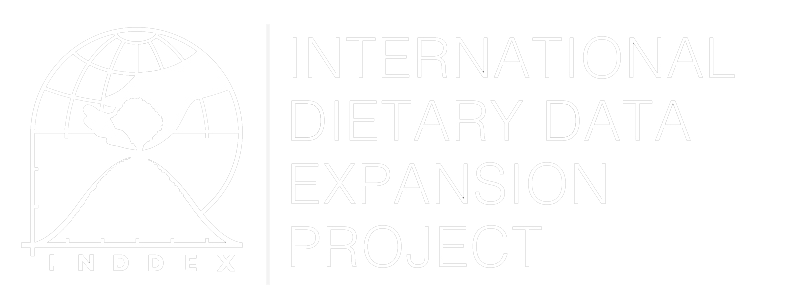Summary
Food Frequency Questionnaires (FFQ) are a type of dietary assessment instrument that attempts to capture an individual’s usual food consumption by querying the frequency at which the respondent consumed food items based on a predefined food list. Given that food lists are culturally specific, FFQs need to be adapted and validated for use in different contexts (Thompson & Subar, 2013).
FFQs are a common method for measuring dietary patterns in large epidemiological studies of diet and health. FFQs are often limited to the food items that are a source of nutrients related to the particular dietary exposures under study, for example, fruit and vegetable consumption or foods with high levels of saturated fat. Dietary diversity scores are a type of metric that are often calculated from a simplified FFQ (see the description of Dietary Diversity metrics to learn more). Food consumption modules of Household Consumption and Expenditure Surveys (HCES) that use a food list and an extended recall period can also be considered a type of FFQ.
In general, FFQs rely on a longer recall period in order to capture foods that are not consumed every day but are still part of the individual’s typical diet. FFQ recall periods vary greatly, but typically range from 7 to 30 days (although some are as long as one year). A drawback is that recall bias may increase with longer periods of recall (Coates et al., 2012). However, these measures of ‘usual intake’ are a more valid indicator of the relationship between diet and health outcomes than those capturing only a single 24-hour snapshot of the diet (24-hour Dietary Recalls can only provide information on usual intake if data are collected from respondents on multiple non-consecutive days). Longer FFQs can better assess total diets, but shorter FFQs have higher response rates and lower respondent burdens (Thompson & Subar, 2013).
FFQs typically collect information on the frequency of consumption but not necessarily on the quantity consumed. When FFQs do include questions about quantity consumed it is typically based on standard portion sizes, rather than direct weight or use of household utensils. Therefore, FFQs are not as accurate as other quantitative dietary assessment methods (e.g. 24-hour Dietary Recall) (Coates et al., 2012). Additional measurement error is introduced when food lists are not specific to the studied population, when questionnaires use inconsistent or imprecise portion sizes (Shim et al., 2014), or when the food lists are not granular enough to make an accurate match to a food composition table for deriving nutrient content of the diet. Because food lists are developed with a specific population in mind, it can be difficult to accurately compare results across populations (cultures or countries) with different dietary patterns.
Strengths:
- Better at estimating ‘usual diet’ due to longer recall period than the 24-hour Dietary Recall or 24-hour Weighed Food Records
- Captures individual-level dietary patterns
- FFQs can be easier and less time-consuming to implement than a 24-hour Dietary Recall, if the food list is relatively short (e.g. <100 items)
Weaknesses:
- FFQs require substantial up-front investment to develop and validate the instrument (food list and quantities) for a given context or country.
- Usual frequency of intake is prone to measurement error, particularly with recall periods longer than seven days (and usual portion size questions are prone to measurement error)
- If the FFQ is too long it can be more time consuming to administer than a standard 24-hour Dietary Recall and cause respondent fatigue
- Like most surveys, to capture seasonal variation data collection must span the entire year or be repeated in multiple seasons
